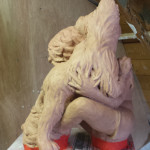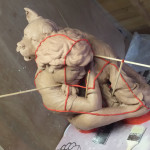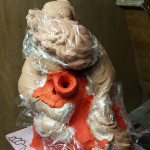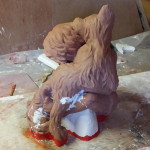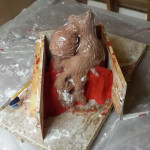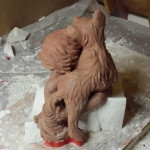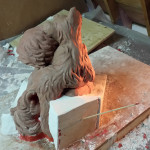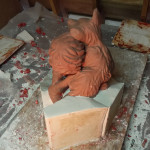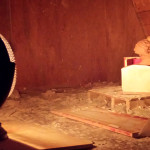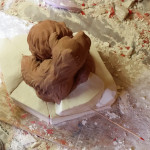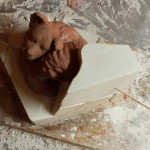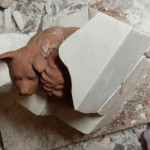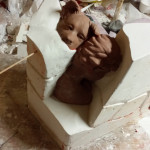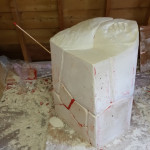Casting St Francis, Brothers, will be my most challenging plaster mould to date. To keep my compact rolling design I’ve compressed the wolf along side and above Francis. Then to emphasize the tumbling motion, I needed to show all limbs including those sandwiched between the pair. With so many undercuts to consider, I need to fully plan each piece well in advance, knowing how they pull away from each other.
Starting from the least accessible section and then moving out and around I build form barriers using plasticine and wood. Cleaning each finished puzzle piece before moving on to the next in line. Plaster wont stick to modelling clay or wood, but will lock onto itself, so don’t forget to apply petroleum jelly to exposed sections.
Following this process, each section follows the next. And as I’m sure you can appreciate, it is very easy to lose track of how each piece relates to the other. What direction they will need to pull apart. With this in mind, I drill pilot holes into the sections indicating the direction they will need to move. A wooden dowel serves as an arrow to guide me. With almost a dozen pieces, this step is key; unless your memory is much better than mine.
The pouring process takes weeks, and this time of year, nights can get frosty. Wet plaster will crack if frozen so don’t forget to heat the project when the mercury dips below freezing.
Around and around she goes with the last piece saved for the nose. I’m strangely proud of my plaster moulds; not sure why. Its not an art… more of a craft or even science. But with each completed project, I sign the work with my palm print. Its now, somehow, a piece of me
With the right amount of low heat, movement of air and reduced humidity, the plaster will be ready for the next step. More on this next time.

